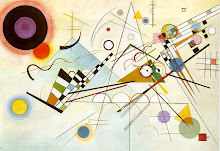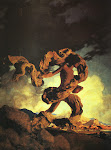Arrangement in Grey and Black: Portrait of the Painter's Mother
1871
Whistler, as so many painters are, is singled out for a single piece: the above posted, and colloquially named, Whistler's Mother. And Whistler, through such paintings, often has his works labeled under Aestheticism, which certain other painters are often included in, such as Beardsley and Rossetti; though, perhaps you could more clearly associate the movement with a writer, such as Oscar Wilde, who was for a certain stroke of time a good friend of Whistler. Personally, I think the label is either weak or misplaced in Whistler's case, since it depends, not on the artwork, which is in the Realist mode, but on the artist's personal philosophy, which was for a lengthy period Aesthetic. If you can connect Whistler with a nascent movement, I would place him in Tonalism, which was a form of landscape painting that employed soft lights and shadows, such as in the painting directly below this paragraph. Terminology aside, Whistler was an amazing painter, who threw himself into all sorts of styles and concepts.
Nocturne: Blue and Gold – Old Battersea Bridge
1870
Symphony in White, No. 3
1866
The Gold Scab
1862
The Thames in Ice
1860
The Little Rose of Lyme Regis
1895













No comments:
Post a Comment